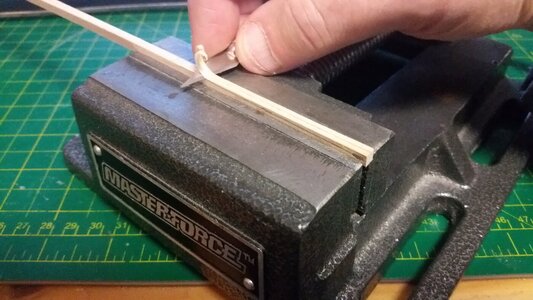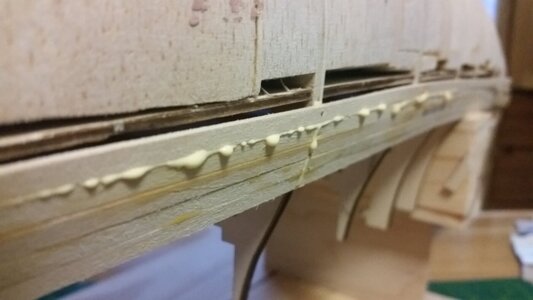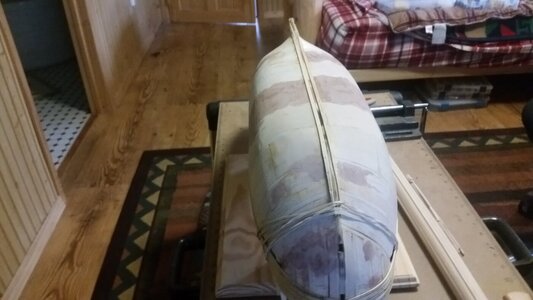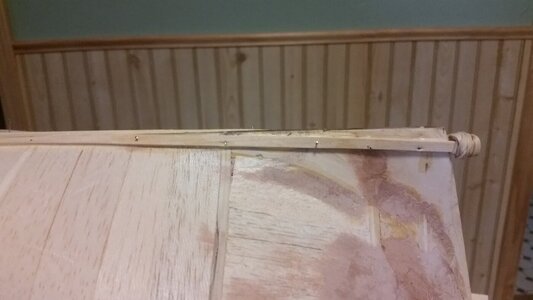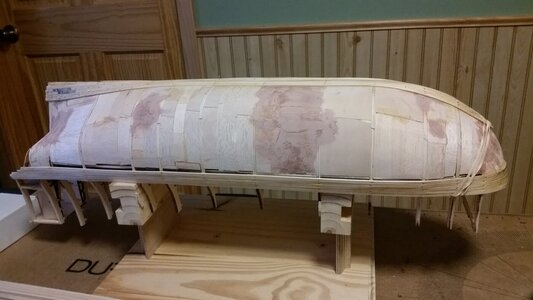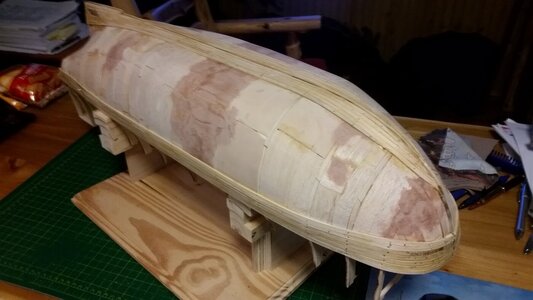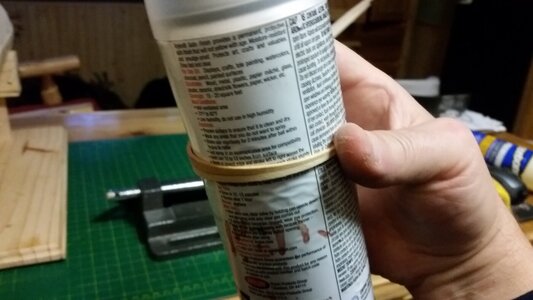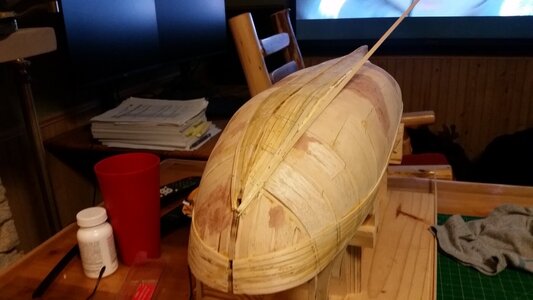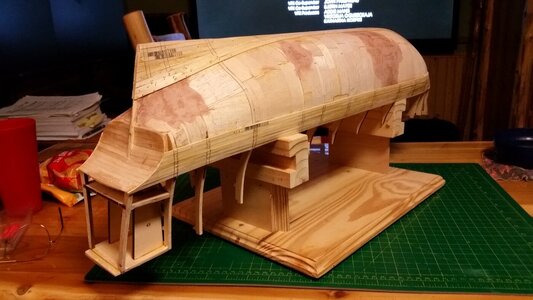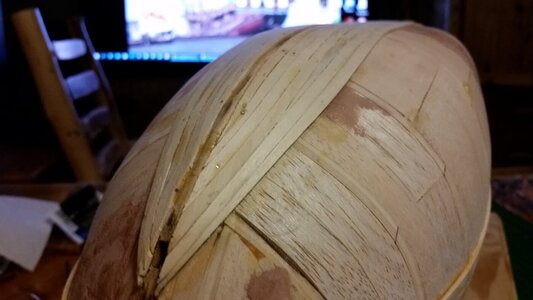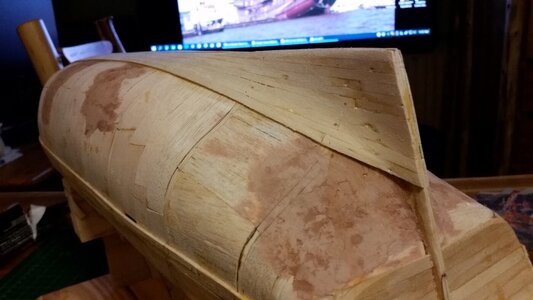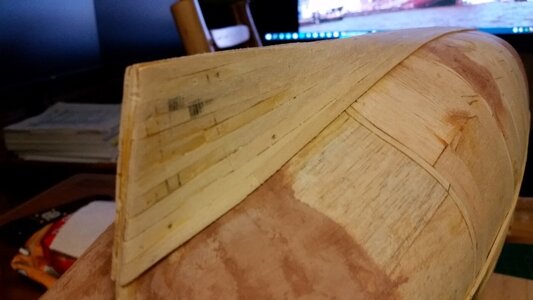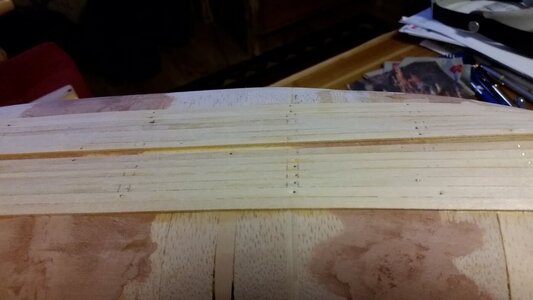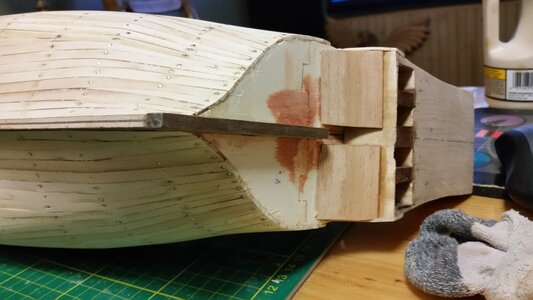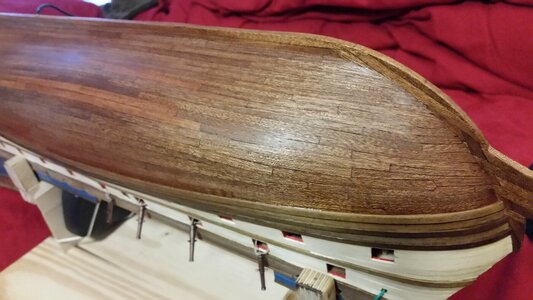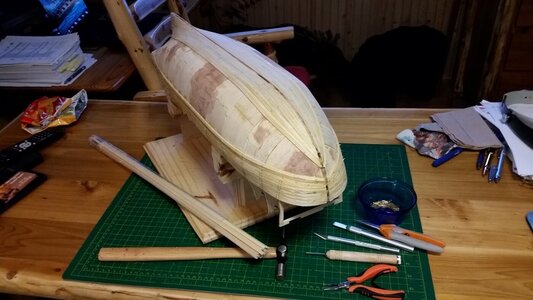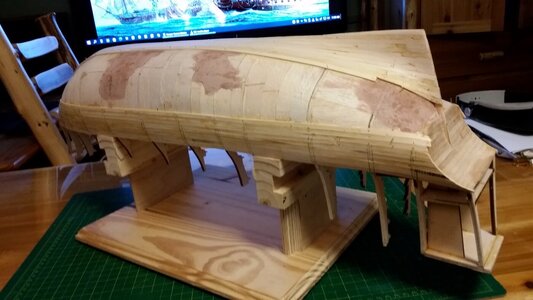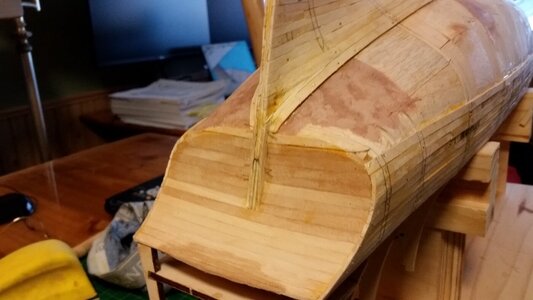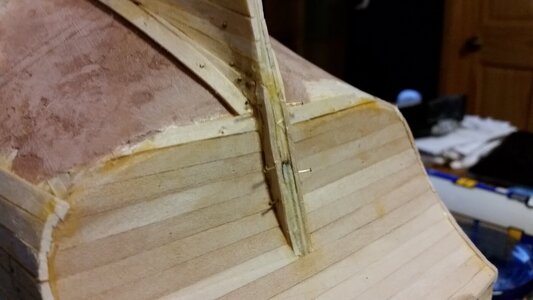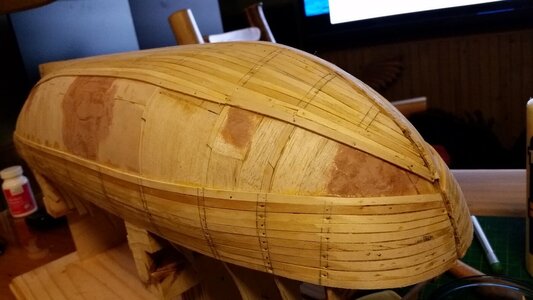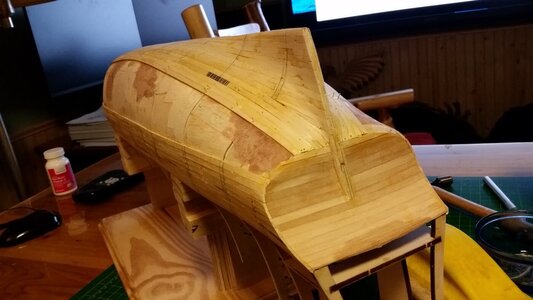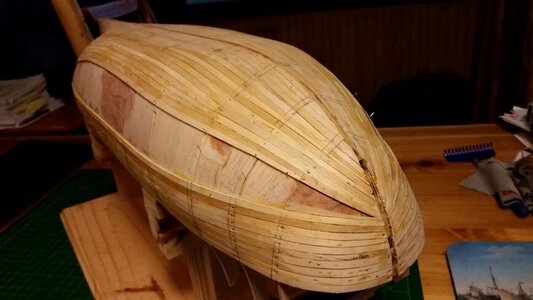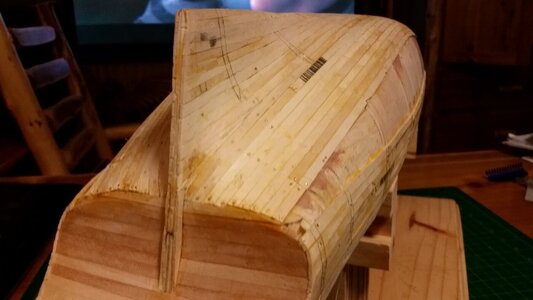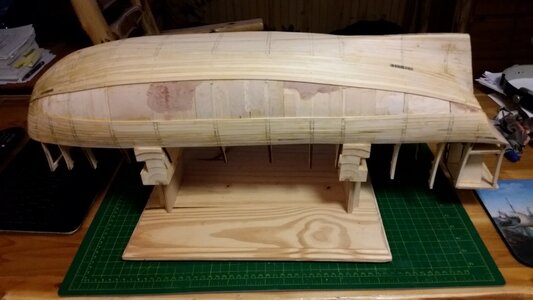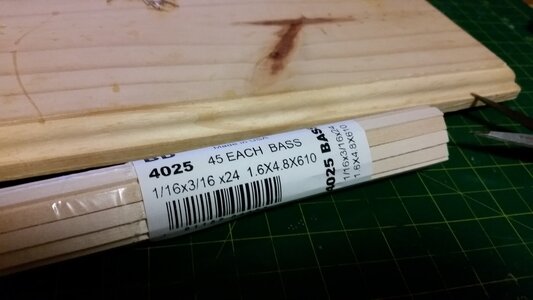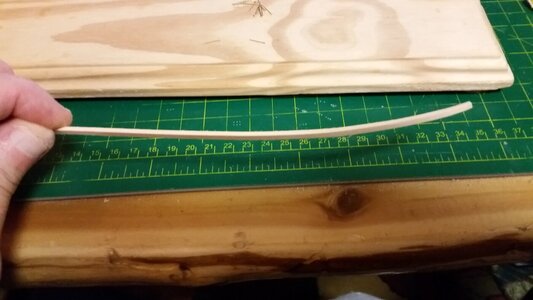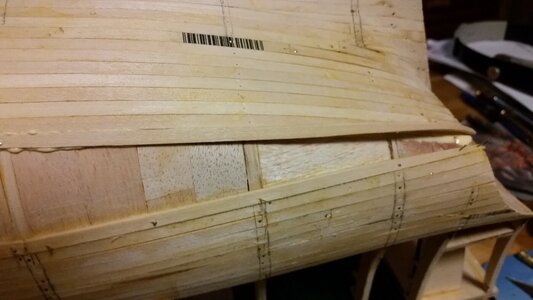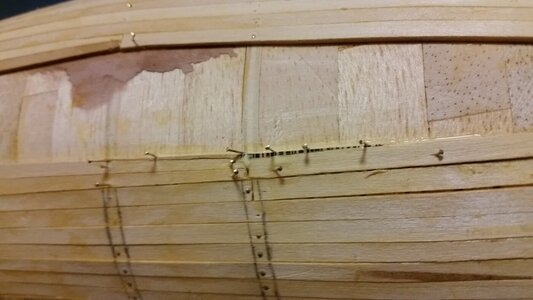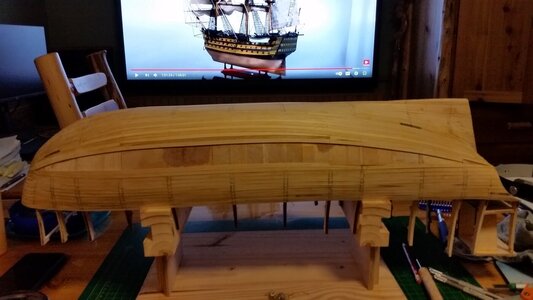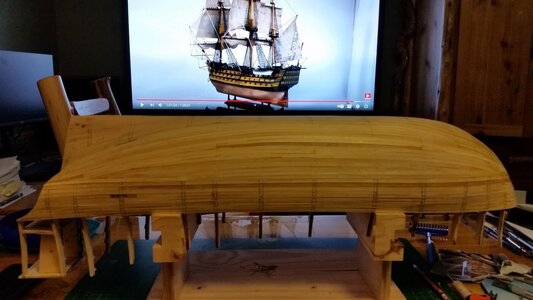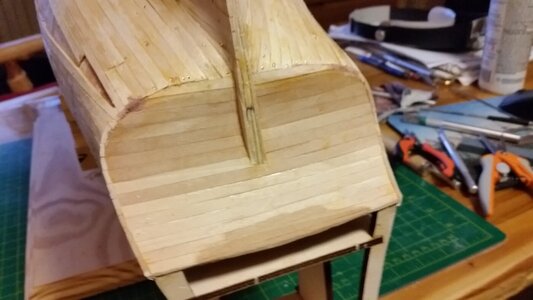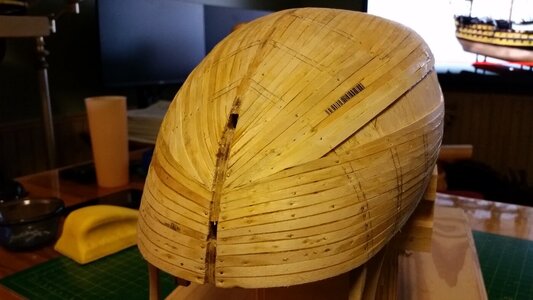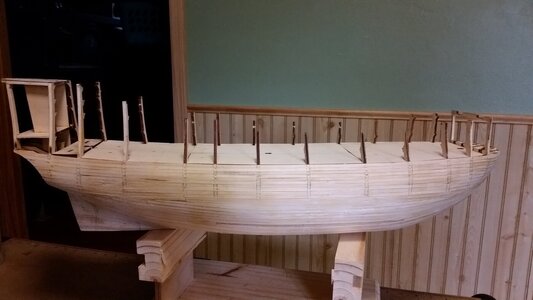Hi Kurt,
I had much similar symptoms, but more like the Flu. Fortunately other than still tiring quickly I’ve gotten the best of it. I’ve found it hard to get things done. The mind goes a hundred miles an hour and the body is in the slow lane.

What is your method for bending the planks? Soaking, heating, steaming,etc? How did you decide where to end the planks and add the short pieces? (I ask a lot of questions, eh)

Jan
On the model of
La Couronne, limewood was soaked and a electric hot iron was used to boil the water into steam while each strip was bent around a can. I don't have very much limewood left over from that build. Basswood is used on this model and it is rather soft and porous. I just throw the sticks of wood in the bathtub with warm water and pull them out one at a time to glue to the hull, starting at the bow. Before gluing and pinning a strip, I carefully curve the strip around a spray paint can for the first 15cm or so with my fingers while the wood is still wet, being careful not to snap it by bending it too fast or not supporting it properly. I use the Amati 10mm fine brass pins # 4136/10 because they will not split wood. These pins are awesome.
Now, because the wood is soaked, you may note some shrinkage and gaps appearing between the planks, no matter how tightly you jam them together while gluing and pinning them. The gaps are not large, and you can just fill them with glue or filler, or leave them since they won't affect the final layer of planking. Usually the gaps show up on the bow curve. As for the pins, some of them are pulled and re-used, but most are lightly tapped with a hammer to submerge the heads into the wood, trying not to drive them in too hard or a local dent will appear in the plank.
It's important that you use lots of PVA glue to join the planks edge to edge, especially since the frames for this model will be removed one at a time later in the build. The shell formed by all the planks needs to be pretty solid before excavating the framework inside in order to build the internal decks and bulwarks.
As for where the ends of each plank are placed on which frame, you don't want to have a joint on an area where the hull curves a lot. So, there are about three to four frames near the middle of the hull where you want to have the end joints placed. Just don't place two of these butt joints next to each other or you may have a pucker or high spot in the hull shape, and the strength of the joints is reduced as well. I match the location of these joints from port to starboard. This method means you'll use more sticks of wood and you'll have more wasted pieces, so if you are building from a kit, you will likely run out of wood because kits typically provide just enough material to cover the hull and nothing left over. In fact, if you build from a kit, plan on buying some extra wood to finish the model unless you are very careful to use every scrap.




